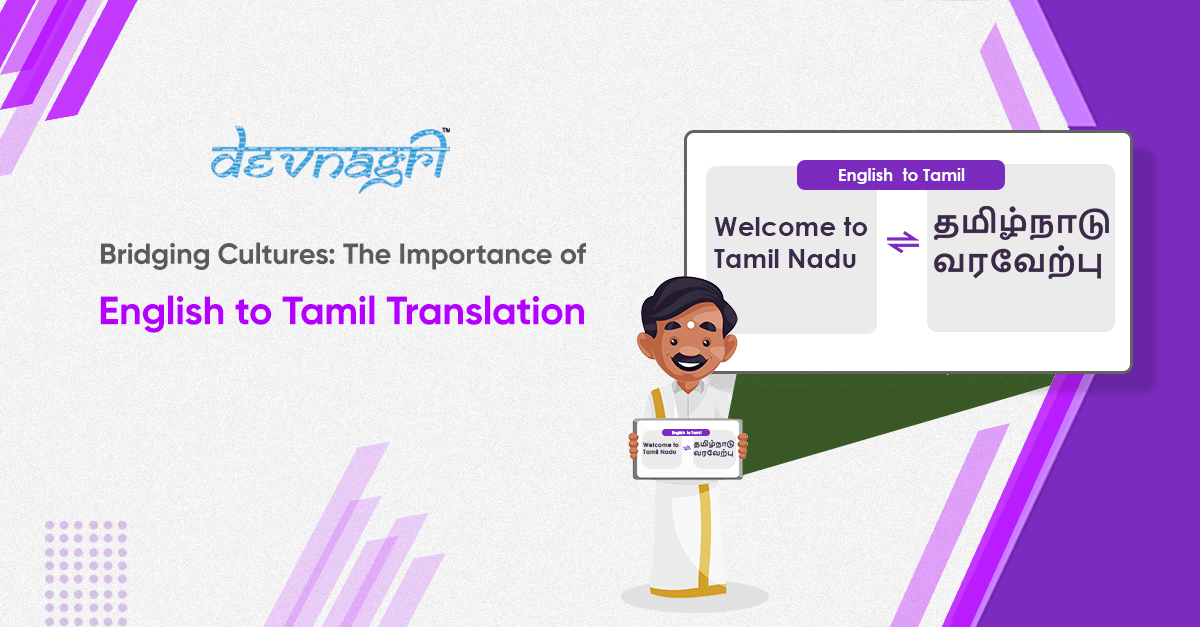
In our increasingly globalized world, communication across languages has become more crucial than ever. One such language pair that holds immense significance is English and Tamil. English, as a widely spoken global language, serves as a lingua franca for business, education, and technology. On the other hand, Tamil, one of the oldest classical languages in the world, is spoken predominantly in the Indian state of Tamil Nadu and in Sri Lanka, Singapore, and Malaysia. The intersection of these two languages highlights the importance of English to Tamil translation, facilitating communication and fostering cultural exchange. In this blog post, we’ll delve into the significance of English to Tamil translation and its impact on various aspects of society.
Also Read: Breaking Language Barriers: The Power of a Website Translator
Preserving Cultural Heritage
Tamil literature, art, and philosophy have a rich history dating back thousands of years. From ancient Sangam literature to contemporary Tamil novels, the language encapsulates the essence of South Indian culture. English to Tamil translation plays a vital role in preserving and promoting this cultural heritage. Translating classic Tamil texts, such as the Thirukkural or works of renowned poets like Bharathiyar, into English ensures that these literary treasures are accessible to a global audience. Similarly, translating English literature into Tamil introduces Tamil speakers to diverse perspectives and ideas from around the world, enriching their cultural experience.
Also Read: Exploring the Nuances of English to Hindi Translation: Bridging Cultural and Linguistic Divides
Facilitating Education and Learning
In today’s interconnected world, proficiency in English is often seen as a gateway to opportunities in education and employment. However, many Tamil-speaking individuals may face challenges in accessing English-language resources due to language barriers. English to Tamil translation bridges this gap by making educational materials, including textbooks, online courses, and academic research, available in Tamil. This enables Tamil-speaking students to learn and acquire knowledge in their native language, fostering a more inclusive and equitable education system.
Also Read: Navigating the Complexities of Finance Translation: Bridging Language Gaps for Global Success
Enhancing Communication and Commerce
As businesses expand globally, effective communication with customers, partners, and stakeholders from different linguistic backgrounds becomes essential. English to Tamil translation facilitates seamless communication in various sectors, including business, commerce, and tourism. Whether it’s translating marketing materials, product descriptions, or legal documents, accurate translation ensures clarity and understanding across language barriers. Moreover, translating websites and mobile applications into Tamil enhances user experience and accessibility for Tamil-speaking audiences, opening up new markets and opportunities for businesses.
Also Read: Navigating the World of Document Translation Agencies: Your Ultimate Guide
Promoting Cross-Cultural Understanding
Language serves as a bridge between cultures, facilitating dialogue and fostering mutual understanding. English to Tamil translation plays a crucial role in promoting cross-cultural exchange by enabling people from different linguistic backgrounds to engage with each other’s ideas, beliefs, and values. Whether it’s translating news articles, documentaries, or social media content, translation facilitates cultural exchange and empathy, breaking down stereotypes and promoting appreciation for diverse perspectives. Moreover, translation allows Tamil speakers to participate in global conversations on issues ranging from politics and science to arts and entertainment, empowering them to contribute their voices to the global discourse.
Also Read: Unlocking Global Markets: The Role of a Website Translation Agency
Nurturing Linguistic Diversity
Languages are an integral part of human identity and diversity, reflecting the unique heritage and worldview of communities around the world. Preserving linguistic diversity is essential for maintaining cultural heritage and promoting social cohesion. English to Tamil translation contributes to the preservation and revitalization of the Tamil language by ensuring its visibility and relevance in an increasingly English-dominated world. By encouraging bilingualism and multilingualism, translation strengthens linguistic diversity and fosters a more inclusive society where individuals can express themselves in their preferred language without facing discrimination or marginalization.
Also Read: Transforming Visuals into Words: The Power of Image to Text Converter Online
In conclusion, English to Tamil translation plays a multifaceted role in bridging cultures, facilitating education, enhancing communication, promoting cross-cultural understanding, and nurturing linguistic diversity. As we continue to navigate an interconnected world, where language is both a barrier and a bridge, translation serves as a powerful tool for building bridges of understanding and forging connections across linguistic and cultural boundaries. By recognizing the importance of translation and investing in language accessibility, we can create a more inclusive and interconnected world where every voice is heard and every culture is celebrated.





